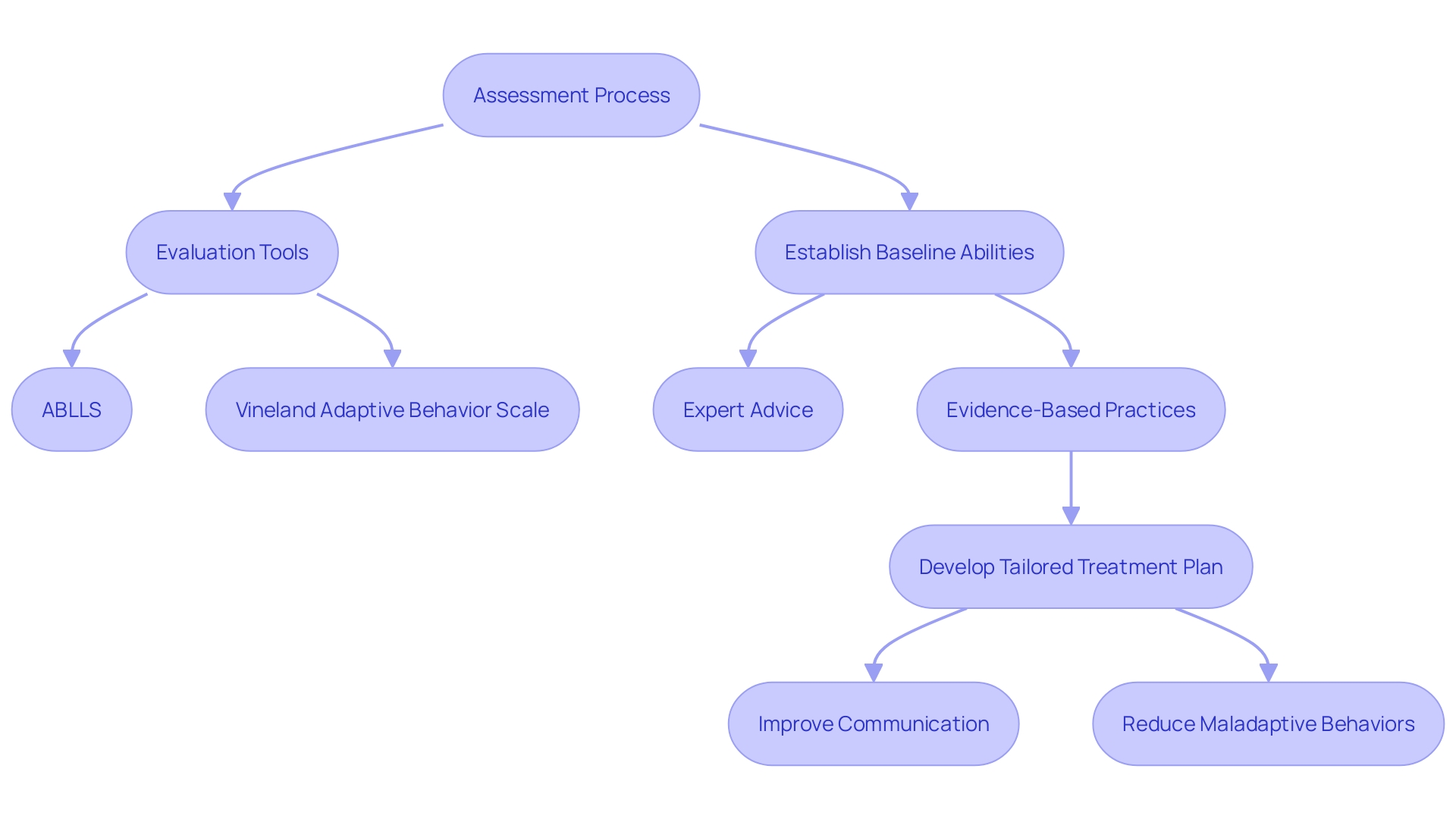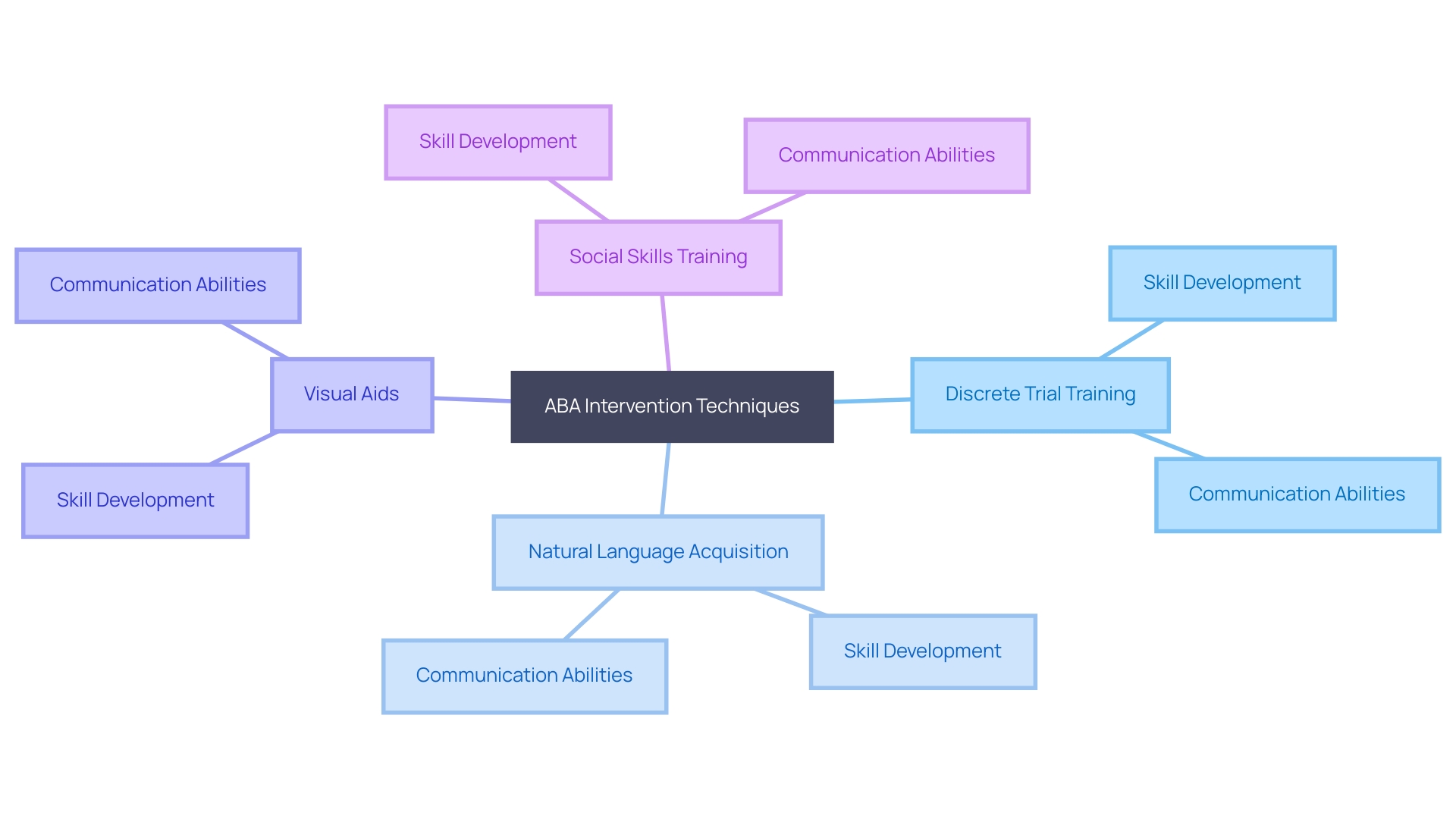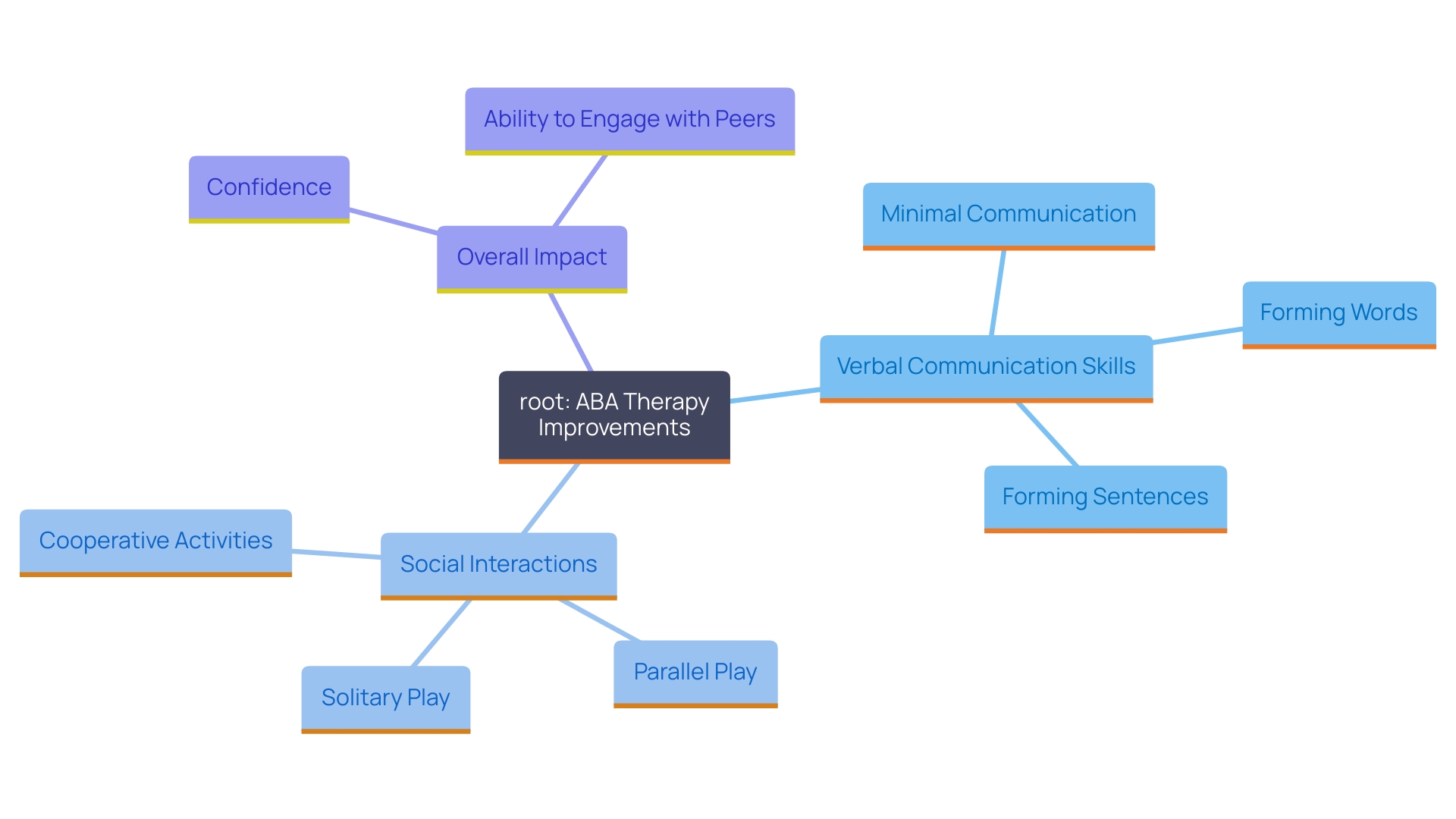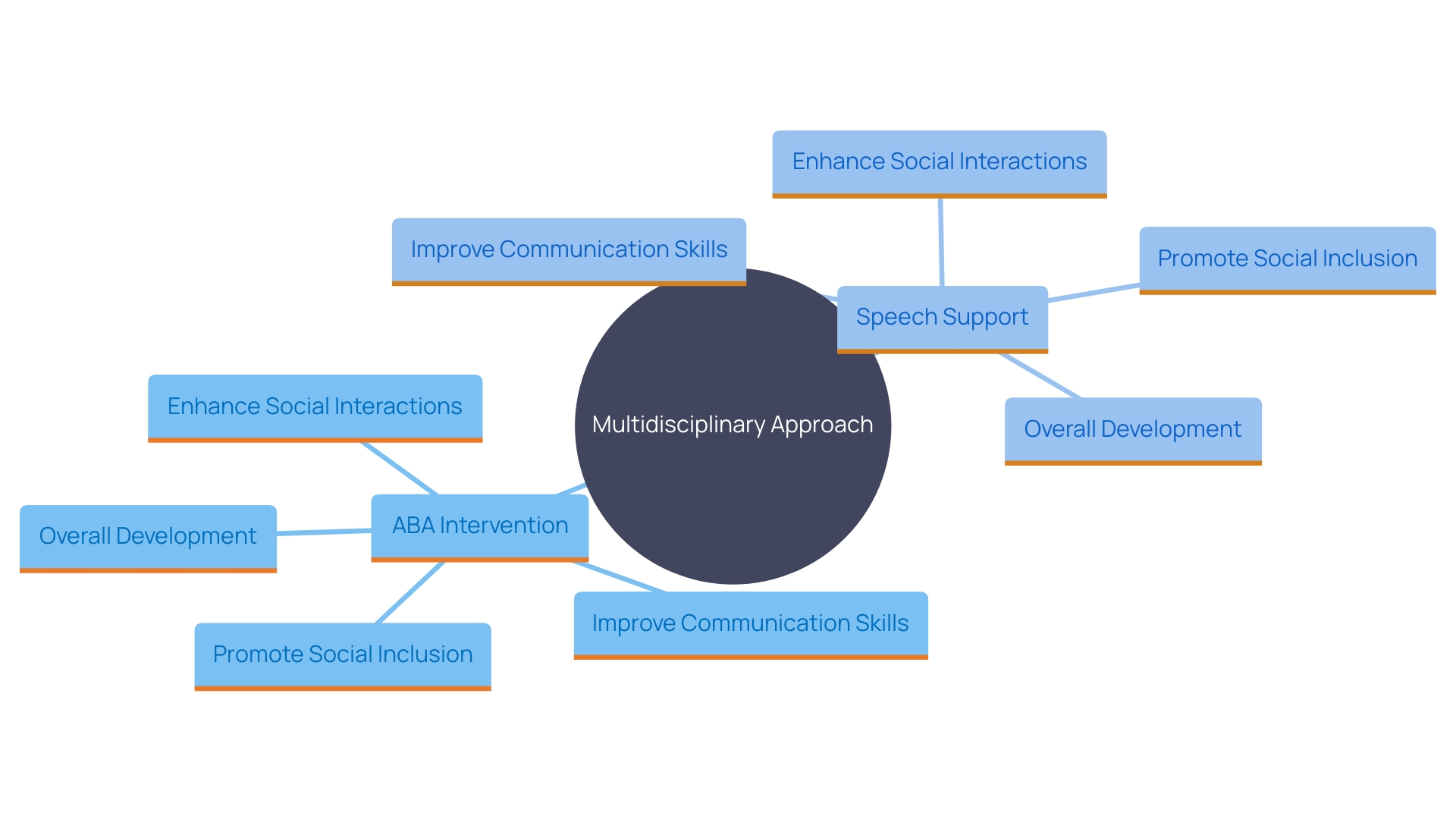Introduction
Applied Behavior Analysis (ABA) therapy has long been recognized as a transformative approach for children diagnosed with Autism Spectrum Disorder (ASD). This article delves into a compelling case study centered on Jake, a 6-year-old boy who faced significant challenges in communication, social interaction, and behavioral regulation. Through personalized ABA interventions, Jake's journey illustrates the power of data-driven techniques in fostering meaningful progress.
The narrative underscores the critical importance of individualized approaches, as highlighted by experts in child psychiatry and supported by authoritative bodies such as the National Academies of Sciences, Engineering, and Medicine. Jake's story is not just about addressing impaired functions but also about creating an inclusive environment where he can thrive, emphasizing the broader cultural and social understanding of disability. This case study offers an in-depth look at assessment and treatment planning, specific ABA techniques, the crucial role of parental engagement, and the synergy of combining ABA with other interventions.
It serves as a beacon of hope and guidance for parents and caregivers navigating similar challenges, showcasing the profound impact of well-implemented ABA therapy on a child's development and overall well-being.
Case Study Overview: The Impact of ABA Therapy
This case study delves into the transformative effects of Applied Behavior Analysis (ABA) therapy on a young individual diagnosed with Autism Spectrum Disorder (ASD). Our subject, a 6-year-old boy named Jake, faced significant challenges in communication, social interaction, and behavioral regulation. By utilizing personalized ABA interventions, we explore how data-driven techniques can foster meaningful progress in individuals with ASD, emphasizing the importance of individualized approaches. According to Dr. David (Dan) R. Offord, a late psychiatrist specializing in youth, "Engaged, peaceful and well-supported participation of young people with disabilities in the major school, home, and leisure domains of their lives is a fundamental determinant of mental health." This principle underscores the necessity for tailored therapeutic approaches. The National Academies of Sciences, Engineering, and Medicine emphasize that providing caregivers with the resources to support their offspring's healthy development is vital. Recognizing both unmet needs and the assets children bring to their communities is vital. This cultural and social understanding of disability indicates that the individual's progress through ABA therapy is not just about addressing impaired functions but also about fostering an inclusive environment where he can thrive.
Assessment and Treatment Planning in ABA Therapy
The assessment process conducted by the individual was thorough, incorporating tools such as the Assessment of Basic Language and Learning Skills (ABLLS) and the Vineland Adaptive Behavior Scale. These evaluations established a baseline for his communication abilities, social skills, and adaptive behaviors. The results guided the development of a tailored treatment plan aimed at enhancing his communication through functional language training and decreasing maladaptive behaviors using positive reinforcement strategies. As the National Academies of Sciences, Engineering, and Medicine emphasize, providing expert advice and implementing evidence-based practices are crucial in addressing the unique needs of individuals like him. Their commitment to fostering innovative thinking and supporting scientific advancements helps shape effective treatment strategies that ensure better outcomes for children with developmental challenges.

ABA Therapy Techniques and Strategies
The ABA intervention employed a mix of Discrete Trial Training (DTT) to assist him in developing essential skills and Natural Language Acquisition (NLA) techniques to promote spontaneous communication. Visual aids were seamlessly integrated, enhancing his comprehension and retention of new concepts. Additionally, social skills training was prioritized, featuring role-playing exercises and peer interactions to develop his ability to engage effectively with others. These techniques are crucial in fostering well-rounded development and ensuring that he can participate meaningfully in his daily life.

Case Study Examples: Success Stories with ABA Therapy
Over a six-month period, ABA therapy brought transformative changes to the individual's life. Initially, the individual had minimal verbal communication skills, but with consistent intervention, he began forming simple sentences and expressing his needs more clearly. His social interactions saw a dramatic improvement, progressing from solitary play to engaging in cooperative activities with peers. This shift was not just noticed by therapists but also significantly by his parents, who reported a newfound confidence in their child's ability to handle social situations. These enhancements emphasize the significant effect ABA treatment can have on a child's everyday life, promoting both communication and social abilities crucial for their overall well-being.

The Role of Parental Engagement in ABA Therapy
Parental involvement played a pivotal role in the child's progress. Through regular training sessions, his parents were equipped with essential strategies to reinforce positive behaviors at home. They actively participated in therapy sessions, ensuring a consistent approach to his learning. This collaboration not only strengthened the parent-child bond but also empowered the parents to advocate for their child's needs in various settings. As Dr. David (Dan) R. Offord, a renowned child psychiatrist, once said, “Engaged, peaceful, and well-supported participation of children and youth with disabilities in the major school, home, and leisure domains of their lives is a fundamental determinant of mental health.” This underscores the importance of a supportive home environment in promoting the well-being and development of children with disabilities.
Combining ABA Therapy with Other Interventions
The treatment strategy for the individual included both ABA intervention and speech support to thoroughly address his communication challenges. This multidisciplinary approach provided a holistic view of his development, ensuring that all areas of growth were considered. The partnership between ABA and speech intervention was particularly effective, as enhancements in his communication skills significantly improved his social interactions. This synergy emphasizes the significance of incorporating diverse therapeutic approaches to assist individuals like him, promoting improved outcomes and encouraging greater social inclusion.

Outcomes and Progress in ABA Therapy Case Studies
The case study highlights the significant effect of ABA treatment in promoting skill advancement and enhancing the quality of life for children with Autism Spectrum Disorder (ASD). Throughout his treatment, Jake experienced significant advancements in communication and behavioral regulation. These enhancements highlight the transformative potential of ABA intervention when executed with high quality, as emphasized by the Council of Autism Service Providers (CASP). Lorri Unumb, CEO of CASP, asserts that “ABA is a highly effective treatment for autism. But it has to be correctly implemented at the highest quality.” This case not only illuminates the benefits of ABA therapy but also serves as an inspiring example for parents facing similar challenges, offering hope and encouragement.
Conclusion
The case study of Jake highlights the transformative power of Applied Behavior Analysis (ABA) therapy for children diagnosed with Autism Spectrum Disorder (ASD). Through personalized interventions, Jake's journey illustrates the significance of tailored approaches that address individual needs, emphasizing that effective therapy goes beyond merely targeting deficits. The insights from experts and authoritative bodies reinforce the necessity of creating an inclusive environment where children can thrive.
Assessment and treatment planning are crucial components of ABA therapy, as demonstrated by Jake's comprehensive evaluations that guided his personalized treatment plan. By utilizing evidence-based practices, caregivers can ensure that interventions are both effective and aligned with the unique challenges faced by children with developmental disorders. The integration of various ABA techniques, including Discrete Trial Training and Natural Language Acquisition, has proven essential in fostering meaningful communication and social interactions.
Parental engagement emerges as a vital factor in Jake's progress, showcasing how active participation in therapy strengthens the parent-child relationship and empowers families to advocate for their children. The collaborative approach of combining ABA with other interventions, such as speech therapy, further enhances the potential for holistic development, demonstrating that a multidisciplinary strategy can yield significant improvements in a child's life.
Ultimately, Jake's success story serves as a beacon of hope for parents and caregivers navigating similar challenges. The profound impact of well-implemented ABA therapy underscores the importance of individualized support and the potential for transformative change in the lives of children with ASD. By fostering a supportive environment and utilizing effective strategies, families can create pathways for meaningful growth and development, ensuring that their children thrive both socially and emotionally.




